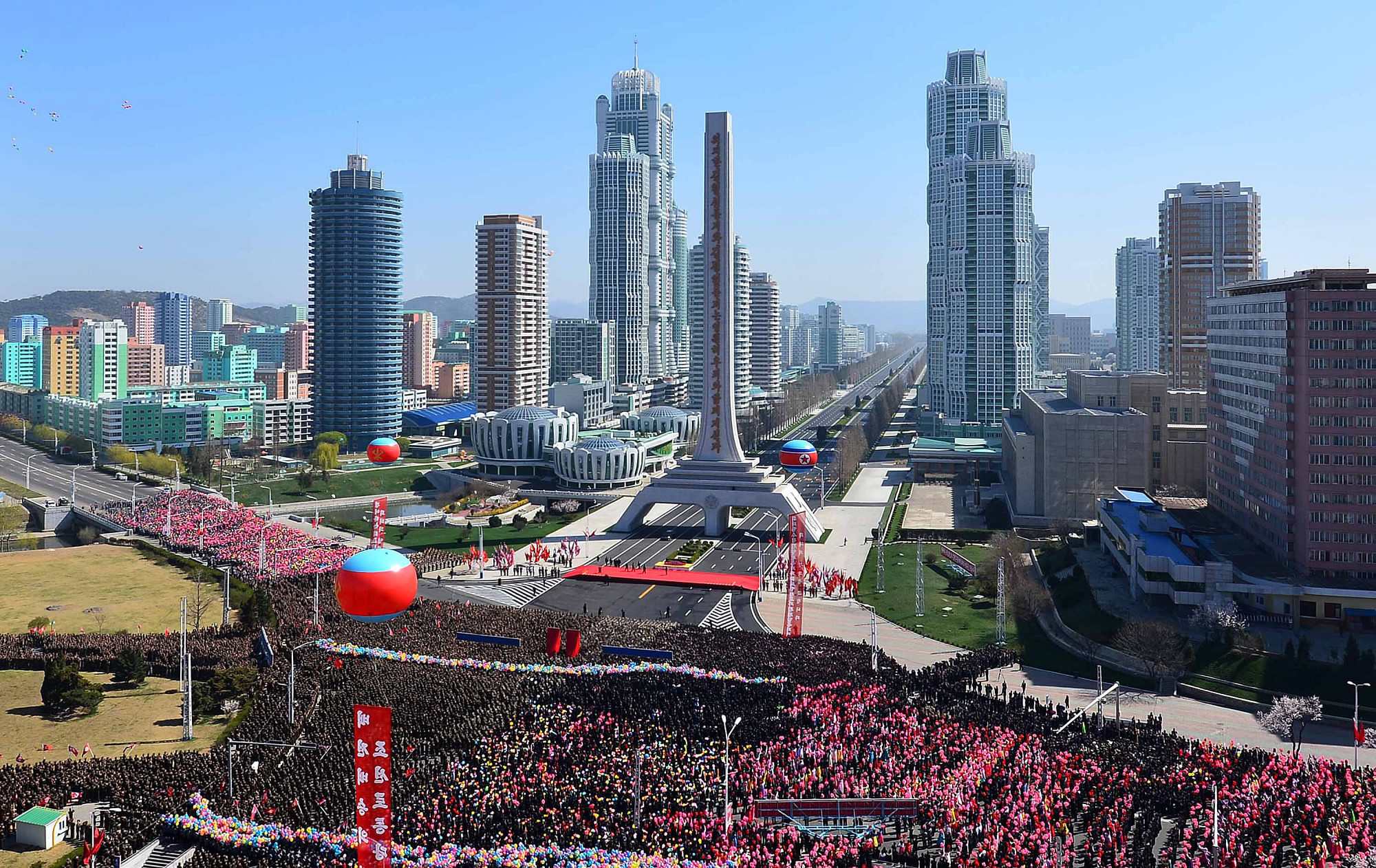More languages
More actions

Pyongyang (Korean: 평양시; Hanja: 平壤市) is the capital of the Democratic People's Republic of Korea. Pyongyang is located on the Taedong River about 109 km (68 mi) upstream from its mouth on the Yellow Sea. Pyongyang is a directly administered city with equal status to the provinces of DPRK.
Pyongyang is one of the oldest cities in Korea.[1]
There are many prominent landmarks in Pyongyang, such as Juche Tower, Kim Il Sung Square, the Chollima statue, the Workers' Party of Korea founding monument, Pyongyang's Arch of Triumph, the Mansu Hill Grand Monument, and the Kumsusan Palace of the Sun. The Ryugyong Hotel, known for its pyramid shape, is also found in Pyongyang. In addition there are several institutions in Pyongyang, such as the Grand People's Study House, the Kim Hyong Jik University of Education, and Kim Il Sung University, as well as attractions such as Moranbong Park, Munsu Water Park, the Central Botanical Gardens, and the Central Zoo.[2]
History
The ancient capital of the legendary Dangun dynasty (2333 BCE) was located on the site where, according to legend, the modern city of Pyongyang was founded in 1122 BCE.[1] Pyongyang has been the capital of two ancient Korean kingdoms, Gojoseon and Goguryeo, and served as the secondary capital of Goryeo.
Korean War
Pyongyang was devastated during the Korean War, during the sustained aerial bombing by the United States of America. By the time of the armistice, an estimated 75 percent of Pyongyang's area was destroyed by the bombing campaign, which was part of a broader U.S. bombing effort throughout the country, in which conventional explosives, incendiary bombs, and napalm destroyed nearly all of the country's cities and towns.
References
- ↑ 1.0 1.1 “P’yŏngyang | National Capital, North Korea” Encyclopædia Britannica.
- ↑ “North Korea Travel Guide | Pyongyang Sights and Tourist Attractions.” 2017. Tongil Tours. June 23, 2017. Archived 2023-03-14.
